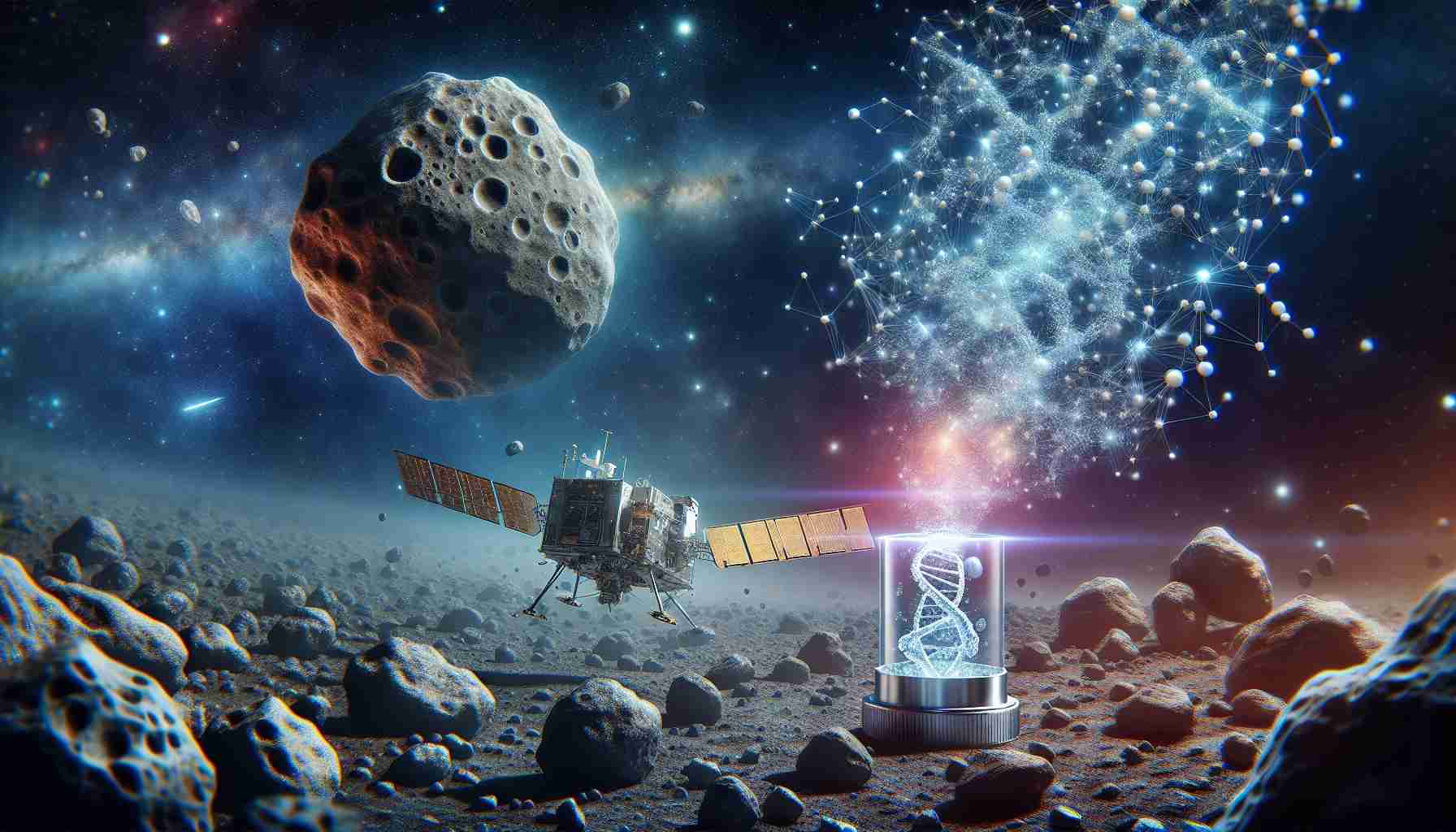- NASA’s OSIRIS-REx mission has returned significant samples from the asteroid Bennu, enhancing our understanding of life’s origins.
- Samples contain essential chemical building blocks, including amino acids and elements found in DNA.
- Discovery of unique salts and minerals suggests asteroids were once active environments contributing to life’s formation.
- Research implies asteroids may act as laboratories for life’s essential ingredients, impacting our understanding of planetary formation.
- The findings highlight the potential for discovering life’s building blocks beyond Earth, extending our search across the universe.
- The ongoing analysis of the samples promises further exciting revelations about our cosmic origins.
NASA’s groundbreaking OSIRIS-REx mission has catapulted us into the cosmos, revealing astonishing discoveries that may rewrite our understanding of life itself. After a thrilling journey, the spacecraft returned from the near-Earth asteroid Bennu, delivering a treasure trove of rock and dust—samples that have now unveiled their secrets.
Recent studies highlight that Bennu holds some of the chemical building blocks of life, including amino acids and vital elements found in DNA. Scientists discovered surprising salts and unique minerals that have never before been seen in asteroid samples. These findings suggest that asteroids like Bennu were once bustling with chemical activity, potentially delivering the essential ingredients for life to our planet and others within the solar system.
Dr. Daniel P. Glavin, a senior scientist at NASA, expressed enthusiasm about these discoveries, noting their implication that asteroids could serve as cosmic laboratories where life’s raw materials were formed. This revelation opens a gateway to understanding how life may have emerged on Earth, and possibly, elsewhere in the universe.
The OSIRIS-REx mission reminds us that the cosmos is not just a distant realm, but a dynamic place that may hold answers to our existence. As we continue to study the samples, who knows what further mysteries we might unlock? The journey is just beginning, and the quest for knowledge about our origins promises to be as thrilling as the voyage itself!
Unlocking the Secrets of the Cosmos: What OSIRIS-REx Revealed About Life’s Origins
NASA’s OSIRIS-REx mission is a landmark achievement in space exploration, revealing groundbreaking insights into the origins of life and the nature of asteroids. The spacecraft, which successfully returned samples from the near-Earth asteroid Bennu, has provided scientists with invaluable data, enriching our understanding of the building blocks of life.
New Insights Gained from Bennu’s Samples
Recent analyses of the samples collected from Bennu highlight several important findings:
1. Chemical Complexity: Bennu’s samples include both amino acids and essential elements like carbon, hydrogen, nitrogen, oxygen, phosphorus, and sulfur, all of which are crucial for the formation of life.
2. Unique Minerals: The samples contain unexpected salts and minerals that have not been previously identified in asteroid samples, indicating complex chemical processes may have taken place on Bennu.
3. Implications for Life: The discoveries suggest that asteroids could have been significant contributors to the prebiotic chemistry on Earth, potentially delivering the essentials that led to the emergence of life.
4. Asteroid Activity: There is now evidence that asteroids like Bennu might have once been teeming with chemical activity, supporting the theory that they served as ancient cosmic laboratories.
Key Questions Answered About the OSIRIS-REx Mission
1. What are the main implications of the findings from Bennu?
– The findings suggest that asteroids were integral to the development of life on Earth and that similar celestial bodies could harbor the conditions needed for life elsewhere in the universe.
2. How do these discoveries change our understanding of the origins of life?
– The revelation that asteroids contributed essential organic compounds supports the notion that life’s building blocks were not only Earth-bound but could be distributed throughout the solar system via impacts.
3. What future missions are planned to further explore these findings?
– Upcoming missions, such as NASA’s follow-up mission to sample a different asteroid (NASA’s Psyche mission) and international endeavors to explore Mars and its moons, aim to expand our understanding of prebiotic chemistry and the potential for life beyond Earth.
Additional Information
As scientists continue to study the Bennu samples, various aspects of the mission contribute to current trends in astrobiology, planetary geology, and the search for extraterrestrial life. The findings not only enhance our comprehension of the early Earth but also encourage the exploration of other celestial bodies.
For those interested in the future of space exploration and astrobiology, consider checking out these resources:
NASA | The Planetary Society | Cosmos Magazine
















